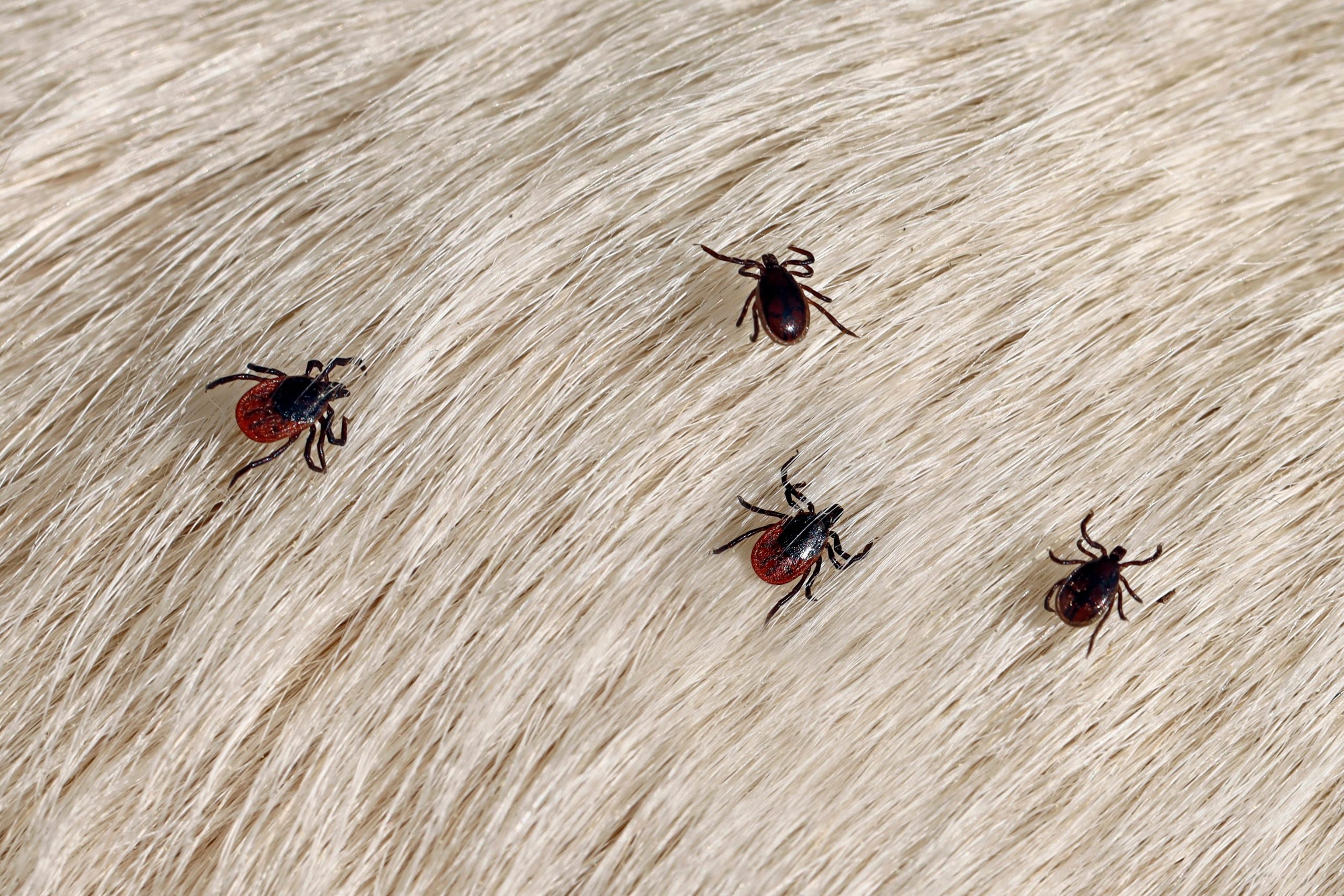The Center for Food Security and Public Health would like to hear from you, with your participation assisting with guiding resource creation about ticks, mosquitos, mites, and other arthropods of veterinary health concern. Take this short, 5-minute survey here.
No matter the time of year, insects can be challenging on farms. Ticks, flies, mites, and other arthropods can introduce diseases to your livestock. While we may be past the worst seasons for it, as they tend to be more challenging in the spring and summer, planning to reduce your livestock’s exposure can start now.
What is an arthropod?
Arthropods includes insects, ticks, lice, and mites. They are capable of spreading diseases and can cause significant economic losses to farmers. Therefore, it is incredibly important to help protect against them. In the spring and summer, flies and ticks are some of the most visible, including horn flies, face flies, and stable flies.
Animal health considerations
These pests contribute to additional stress on livestock, from slight blood loss, annoyance, and causing changes in grazing patterns. This added stress can distract from eating, causing reduced weigh gain and milk production. For smaller animals, like calves and small ruminants, severe blood loss can also cause anemia.
In addition, these insects can be vectors of disease. One of the most common ones seen by producers is pinkeye, which is of major economic significant, which an estimated $150 million is lost for cattle producers through decreased weigh gain, decreased milk production, and increased treatment costs. Other diseases include Lyme disease, Bovine leukemia virus, and Q fever.
Prevention for producers
Prevention is critical to manage pests for both conventional and organic operations. Livestock should have clean, dry places, which helps reduce the insect loads. Insects tend to be near wet, warm, places, especially near manure or mud. Keeping pens clean, and rotating pastures often can help reduce the buildup of manure, which can help control insect numbers.
To complement environment management, there are other tools which can assist you in managing pests near your livestock. However, it is important to choose one that best fits your production type and a method of administration that fits your facilities.
- Liquid pour-ons have widespread use and can be used effectively if the correct dose for the weight of the animal is used.
- Feed fly control is a supplement that can be used in different types of feed, including grain, milk replacer, or water and \contains an insect growth regulator compound or larvicide. This is passed through undigested by the animal and released in manure. These products take about 30 days to be fully effective, so starting to feed in early spring will assist farmers in most environments.
- Fly tags, or insecticide ear tags can also be helpful in fly and tick control. It is important to work with your veterinarian to ensure the correct timing of the tag in addition to identifying what active ingredient should be used in your tags from year to year to avoid developing resistance.
- Fly traps and tape are used, depending on facility design. These are most effective in low-airflow areas, especially around feed.
- Back rubbers and dust bags can also be used in certain facilities. It is recommended to set these up near water troughs or mineral feeders to maximize usage.
- Fly predators prey on pests, and are commercially available for purchase. These insects prey on the pests, laying eggs inside the host, eventually killing the pest insect.
Arthropods can play a significant role in livestock health, impacting productivity to overall animal welfare. Understanding how these pests interact with livestock is important, allowing you and your veterinarian to develop a plan for effective management.
Sources:
Virginia Cooperative Extension: Pinkeye in Beef Cattle
Beef Quality Insurance: Insect Control and Improving Cattle Health

